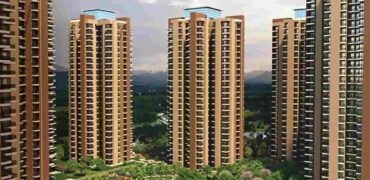Many homebuyers looking to purchase a resale flat in Noida are shocked when they come across a cost they never thought they would have to pay. Along with stamp duty and registration costs there is one more compulsory fee – the Transfer Memorandum (TM) fee. While most people do not pay attention to the fee, it can deeply affect your resale budget and even set you back from obtaining legal ownership, if done incorrectly.
This blog is dedicated to educating you on TM: what it is and how much it is calculated, who has to pay TM (and how much) and why it is extremely important for completing a legal transfer of property in Noida.
Why Is TM Charged in Noida? Understanding Leasehold VS Freehold
Unlike many Indian cities, where properties are freehold, in Noida, properties are all leasehold. This means that the developer does not buy the land outright, but rather, they are leasing the land from the Noida Authority for a fixed period of time. Typically, it’s for a period of 90 years. Then, the developer will build residential projects, and when buyers buy a flat, they are not buying the land; they are buying a leasehold right on the land that the authority still owns. When that right is transferred in a resale transaction, the Noida Authority requires the new buyer to formally register the lease in their name. This is referred to as the transfer memorandum, and it comes with a steep fee.
TM Is Not Stamp Duty—It’s an Additional Cost
It can be easy to think that paying the stamp duty and registering your sale deed at the Sub-Registrar’s Office means that you’re done. However, in Noida, this is only half the work. Stamp duty is a tax from the government to validate the sale deed, but the TM charge is paid to the Noida Authority to formally record the lease transfer. If you only pay stamp duty and the sale deed is in your name, you may be the owner on paper; however, you are not the owner to the Authority. This means you won’t be able to make legal changes, get permissions, or even sell the flat later without complications—legally you aren’t the owner.
👉 Also Read:– Why Invest in a Food Court for Sale in Noida?
How TM Charges Are Calculated: The Age of Your Flat Matters
The TM fee isn’t a flat fee. It’s dependent on a variety of factors, and the most vital of which is the year the flat was originally granted. The older the flat, the more the TM charges, because it’s based on a percentage of the original allotment price, not on the current market value.
Here is the rundown:
| Allotment Period | TM Charge (% of Original Allotment Price) |
| Before 1990 | 50% |
| 1991 – 2000 | 20% |
| 2001 – 2011 | 10% |
| 2011 – Sep 2021 | 5% |
| Post 24 September 2021 | 2.5% |
This age slab system can create some really nasty budget surprises if buyers don’t realize this. Just imagine buying a flat from the 1990s and suddenly realizing that the TM alone is half of the original allotment value!
Location Premiums: Sector-wise Costs Can Vary
Another hidden factor will be the location of the flat, which also plays into TM rates, due to the ‘location’ premium charged for the Authority’s local understanding. The Authority is able to vary TM charges for prime plots—corner plots, park-facing plots, plots facing wide roads—and can add upwards of 20% in TM charges when they want to.
For group housing and plotted developments, TM is charged according to the square metres charges as well as a 2.5% location charge. Thus, a flat in a high-demand sector with authority compliance such as 44, 50 or 61 could very easily have a drastically higher TM then other flats in ‘outer sectors’ with no authority compliance such as 115 or 143.
👉 Also Read:– What Are the Top Commercial Projects on Noida Expressway?
Who Gets Discounts? Family Transfers and Exemptions
There is some relief available for transfers between immediate families, but it is not quite as simple as it sounds.
- Immediate relatives (parents, spouse, children): These guys get a 50% discount, and in the case of an inheritance after death, they may be entirely exempt.
- Extended families (siblings, grandparents, cousins): They get partial relief; they normally have to pay 50% of the regular TM fee.
Therefore, gifting the flat to your son may not be too expensive. But gifting it to your sister? That will cost you.
Let’s Anchor This in Real Numbers: The Real Cost of Buying a Resale Flat in Noida
Let’s look at some real numbers to make sense of the actual costs of buying a resale flat in Noida. Let’s say you purchased a 100 sq m flat in Sector 30 with a current circle rate of ₹1,26,750 per sq m. Assuming it was allotted to you after September 24, 2021, the TM charge will be 2.5%, or about ₹3,168 per sq m (i.e., approximately ₹3.16 lakh overall). This TM charge (which is a fee paid directly to the Noida Authority for transferring leasehold rights in your name) only accounts for the initial TM charge. You will also have to pay approximately 7% of the sale value on stamp duty and registration charges, as well as approximately ₹50,000 to ₹1,00,000 for legal, brokerage, and society related costs. In total, you are looking at a potential actual cost increase of at least ₹5–7 lakh on top of the negotiated price. That’s why it’s important to consider the TM as early as possible in your resale plan and not add further financial stress later.
Why Skipping TM Is a Big Mistake?
While it may seem easy to bypass the Transfer Memorandum (TM) charge to save money/be less complicated, doing so is not only a mistake, but an expensive mistake with real implications. By not paying the TM, the Noida Authority does not formally recognize you as the new lessee which essentially means that you don’t have legal permission to engage in any of the most vital tasks, such as development/construction or renovation, or undertaking a freehold conversion of the leasehold property. Banks also usually do not provide the mortgages or even approve refinancing of the property rights unless the TM is carried out to the new buyer’s name. If you try to resell or pass down the flat without the TM, you cannot. Otherwise, your money is tied up in a flat that you can never occupy or resell. To add to this, you may not realize until it’s too late that not reporting the TM and not paying it back may leave you subject to penalties and litigation, making the ownership of the flat only valid on paper-not really. And lastly, it is pretty clear that it is foolish in the first place to risk your property rights in disregarding your TM and then also potentially screw up any future legal/planning or financial strategies related to your home.
👉 Also Read:– Why Is Noida Extension a Hotspot for Commercial Property Investment?
The Process of Applying for TM: Step-by-Step
Obtaining a TM certificate is a procedure that takes time and receipts. Typically, the following steps will occur:
Step 1: Register the Sale Deed:- Complete the registration of the sale deed with the Sub-Registrar’s Office on payment of the stamp duty and registration fee.
Step 2: Gathering all the Required Documents :- You will need: -Original allotment letter -Original TM certificate (if any) -The registered sale deed -Proof of identity/address for the purchaser and vendor -Passport photographs -NOC from the RWA (if any) -Proof of payment of dues (water, maintenance, etc.)
Step 3: Submit to Noida Authority :- Go to your Noida Authority (normally Sector 6 for residential zones), submit all documents and pay the TM charges by demand draft or through the Authority online payment portal (if available).
Step 4: Wait for Certificate to be Issued :- Normal timelines to receive the TM certificate will be between 7 – 30 working days from the date of submission. This is the formal document stating the Authority now recognizes you as the lessee of the flat.
Tips for Smart Resale Buyers in Noida
Here are some quick takeaways to navigate TM:
- 1. Always calculate TM in your time budget—early on—before negotiations.
- 2. You’ll need the original allotment year—it affects the TM slab.
- 3. Avoid GPA sales unless necessary—and budget for double TM.
- 4. Sector premium–factor in where the location and where we believe landscaping will be
- 5. There is no reason to go without legal help to finish documentation, as you don’t want to lose out,
- 6. Negotiate cost-sharing for TM with the seller—plenty of sellers will agree on a 50/50.
👉 Also Read:– Why Should You Invest in Commercial Property in Noida 2025?
Conclusion: Transparency Saves Time and Money
The Transfer Memorandum fee is not a Government secret – it is all clearly recorded. However, in their excitement or due to poor advice, many buyers ignore this fee. The consequence of which is delays, disputes, and unexpected fees. Whether you’re purchasing your first home, or adding a property to your investment portfolio, keep in mind, in Noida, TM is not optional, it is required. It is the Authority’s way of recording your legal ownership in their system. Pay it, document it, and secure your investment.
FAQs
Q1. What is a Transfer Memorandum (TM), and why do I need it in Noida?
Ans. When you get the TM, think of it as the official handshake with Noida Authority. Without it, you may own the flat on paper, but not in the eyes of the Authority. You need this for full legal ownership—and without it, forget approvals, forget resale, forget renovations, etc.
Q2. Isn’t stamp duty enough? Why is TM a separate charge?
Ans. Great question! The stamp duty registers your sale deed with the Government. The TM specifically transfers your lease rights with the Noida Authority, who is the original owner of the land. You require both–one says you have bought something and the other gives you actual authority to legally use that property.
Q3. How is the TM fee calculated for my flat?
Ans. The TM is not flat-rate, it’s dependent on the date when the flat was originally allotted. Older flats (especially those pre-2000) have much higher charges. The TM is calculated based on the original allotment price, not on the market value. In this case, age does affect cost!
Q4. Do I still need TM for a flat inherited from my parents?
Ans. Yes – but with a twist. If you do transfer to an immediate family (parents, children, spouse), you get a 50% discount and in some instances full exemption as an inheritance after death. So, yes, you need it – but it won’t cost you an arm and leg.
Q5. Can TM charges differ by location in Noida?
Ans. Absolutely! Flats in top sectors (44 or 61), vacant corner lots, or park views may all have surcharges based on location. The Authority may assess a surcharge of up to 20% in TM fees. In other words, if you buy near a “hot spot”, you are likely to pay a “hot” price for TM as well.
Q6. What happens if I skip the TM altogether?
Ans. Not having a TM is like driving on a highway without wearing your seatbelt; it is a risky and illegal state of being. Without TM you cannot legally modify and/or assign and/or mortgage the flat, and banks will not take or lend on this flat, while the Authority will not recognize you. You will be stuck with a flat not truly your own.
Q7. How long does the TM process usually take?
Ans. Typically, from submission to uptake approval it can take from 7 to 30 working days. The timeline depends on the extent you completed your documentation, and how quick the local Authority is at processing your TM. Pro tip: have your papers in order, and follow up with the Authority don’t allow your file to pile up dust!
Q8. Is it possible to split the TM cost with the seller?
Ans. Yes: and smart buyers do it all the time. TM is not set in stone as “buy only”. Negotiate for something before closing the sale. Sellers will often go down to share 50% or more with the buyer-especially in market slow down. This is dependably on timing and communication.










